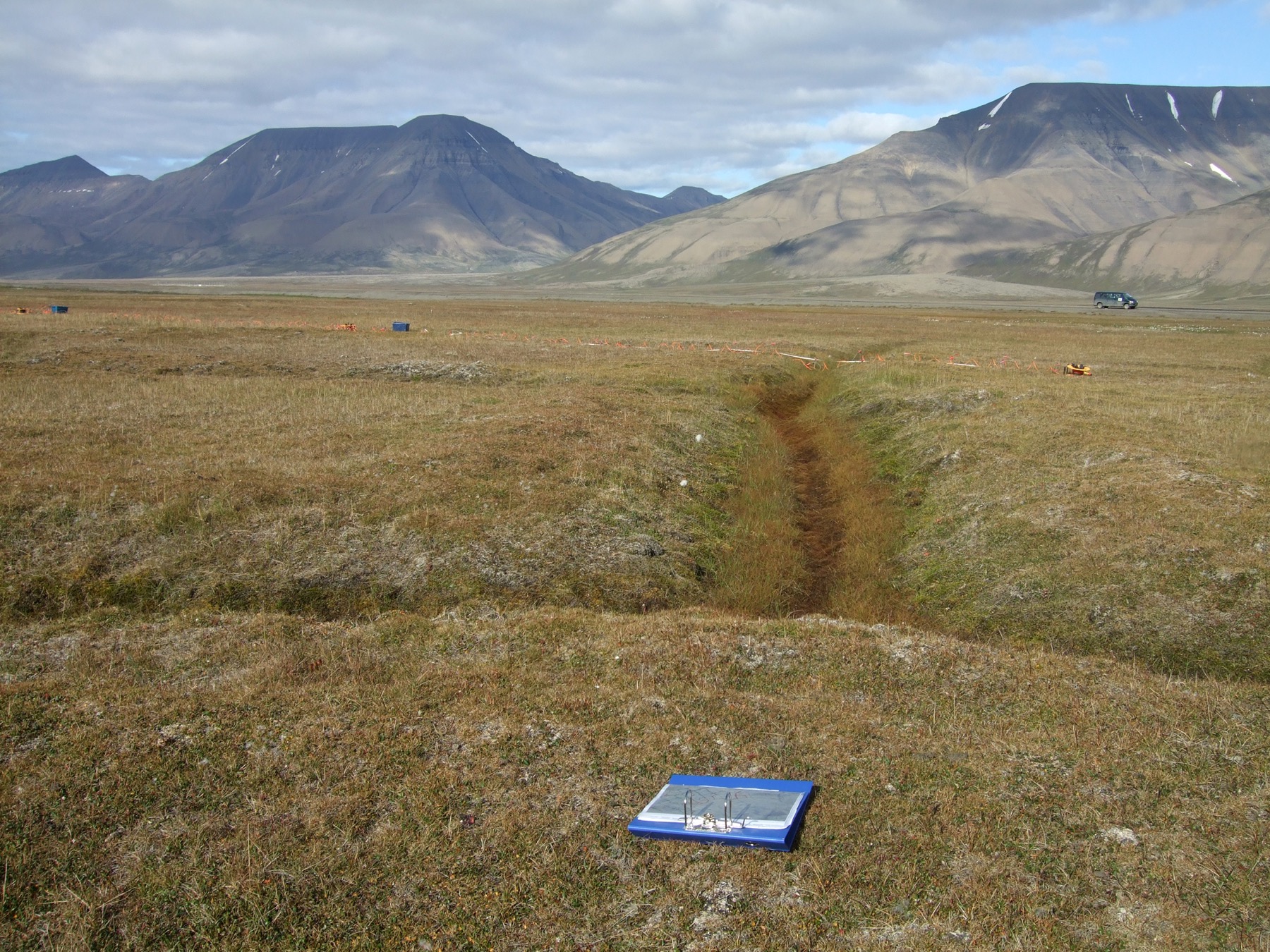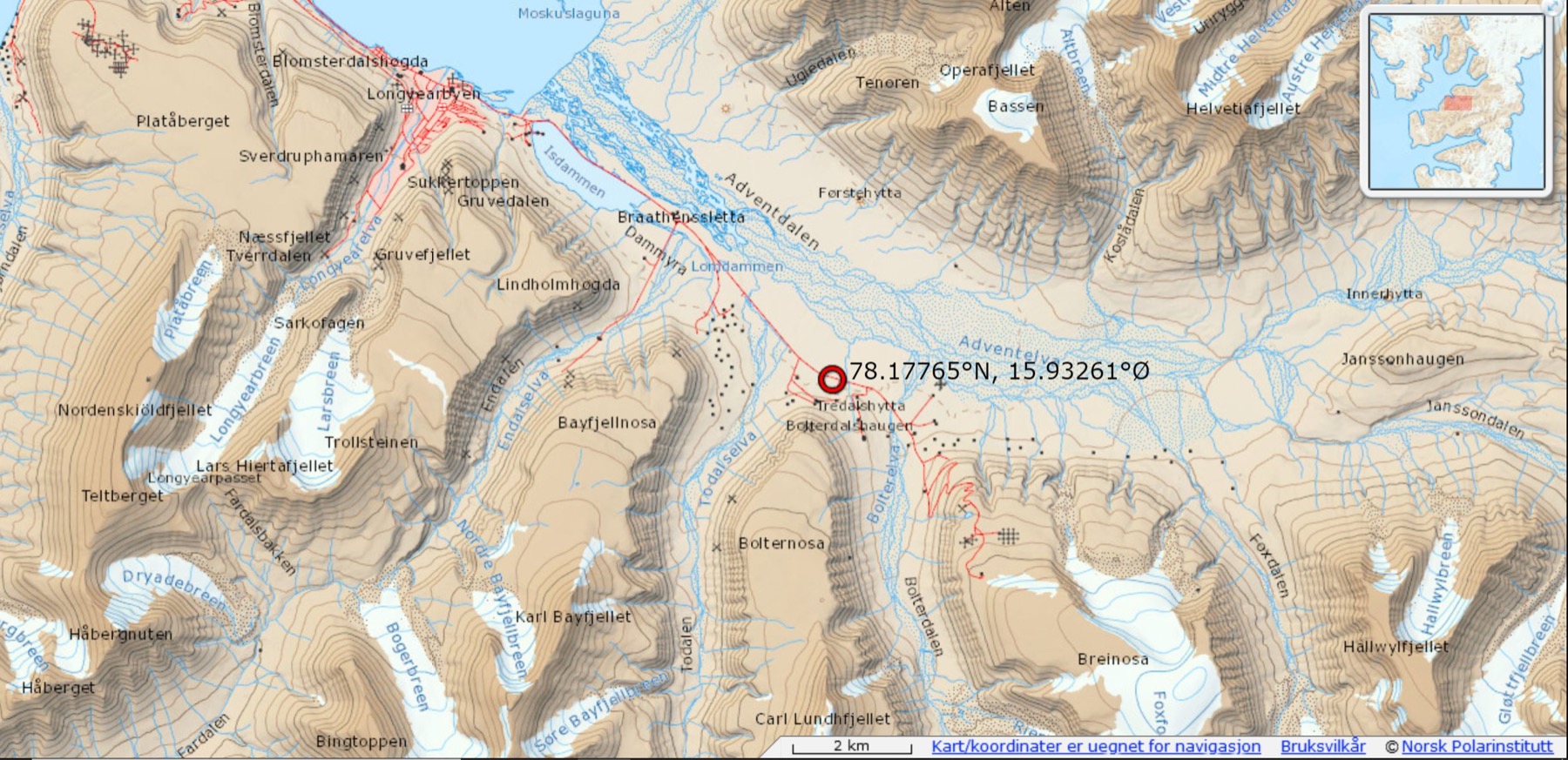The elongated depressions on the tundra hide cold secrets. They are covered ice wedges, forming a peculiar polygonal pattern on the ground. Ice wedges are found mainly on even surfaces. The visible part consists usually of more or less inconspicuous, elongated depressions which are only a few centimetres deep and some decimetres wide, running many metres through the tundra and forming a network of polygons, mostly pentagons and hexagons measuring 10-25 metres in diameter. Occasionally, the shallow depressions become enlarged by small rivers and thus develope into trenches that can be more than a metre deep and wide. In any case, the surface depression covers a wedge-shaped body of solid ice. The development of an ice wedge starts with frost cracks that form in the soil during winters with severe frost. The cavity will be filled with ice crystals or re-freezing meltwater that may survive the following summer within the permafrost layer. The same process will take place over a long time span whenever the winter temperatures drops strongly. A ground temperature near -15°C seems to be an important threshold. Over centuries, the crack can grow to reach a rather massive size, forming an ice wedge that can be up to about a metre thick and reach something like 10 metres into the ground, depending on the penetration depth of the annual temperature variation.
The Longyearbyen Field Guide
We are a group of scientists and Svalbardians who want to share our knowledge about the vicinity of Longyearbyen with you. This app is non-commercial and meant for locals, guides, tourists and everyone interested in science.
It is initially based on the book “The Geology of Longyearbyen” and supported by the Svalbard environmental protection fund, The University Centre in Svalbard, Store Norske Spitsbergen Kulkompani and HDpublish.
We appreciate all of the voluntary contributions and support from all authors and initiators for making this app possible.



